
What Are Your True Sublimation Costs? Check These 8 Areas
For sustainable company growth, you need to get a handle on this number.
Published
4 months agoon
SUBLIMATION, A POPULAR method in the product decorating world in both large- and small-format technology, presents unique challenges in cost calculation. In the dynamic world of sublimation production, understanding and determining your true costs is pivotal. For many businesses the process is complex, but if you have a good framework, you can be more comfortable with your final numbers. There will be some reliance on suppliers for essential items like ink and paper, but many times we forget that those tend to only be a small fraction of the true cost to produce a sublimated item.
Accurate cost calculation is essential for sustainable business growth. Many small businesses struggle with setting prices because they lack a solid understanding of their costs. They tend to try to copy the competition or ask random people on a Facebook group, “What should I charge for…?” Unfortunately, those pricing strategies will start your march to going out of business before you even know it. It is crucial to know your costs so you know what you need just to break even and then you can change the perceived value and start adding profit to the mix.
The start of the complexity is the need to at first to rely on the suppliers or manufacturers for your ink and paper costs. But if you have been in business for some time and have done a really great job of tracking everything, you can pinpoint your own ink and paper costs. For example, take what you paid for ink and paper over a set amount of time, then take the total square inches of jobs you produced during that time (square inch of the size of product produced times the number of times produced) and you have your paper and ink cost.
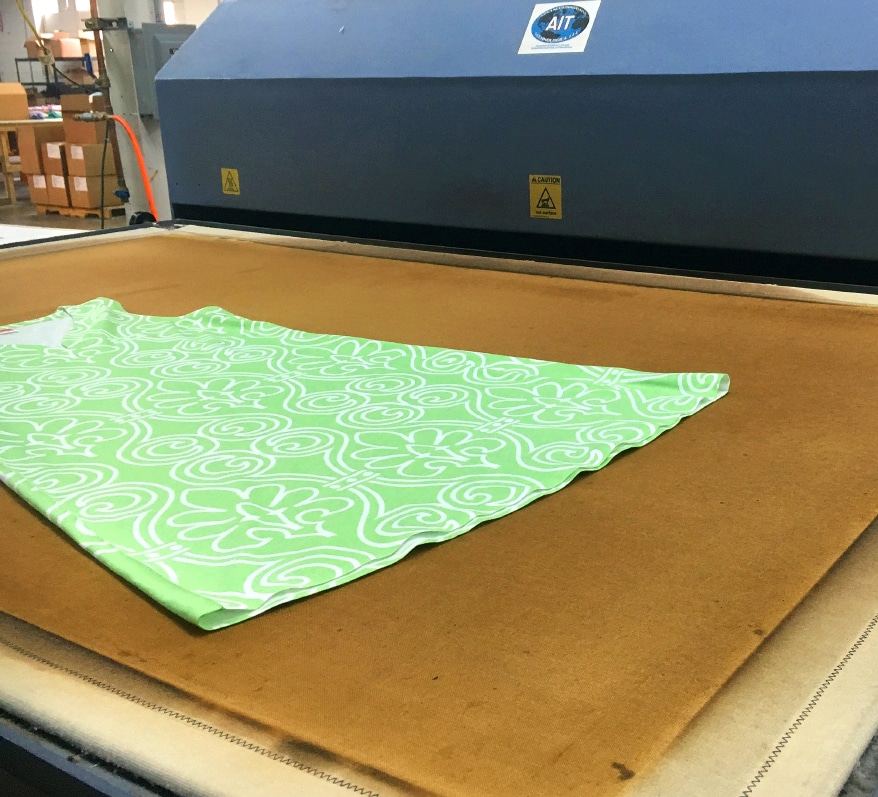
A popular method in the product decorating world in both large- and small-format technology, sublimation presents unique challenges in cost calculation.
But realistically, most businesses are not able to track at this detailed level as they have better things to do with their time. Yes, you can calculate these costs for yourself over time, but that can be tedious and challenging due to the variable. Even after being a sublimator for some time, I still rely on data from my ink and printer manufacturers. But you must be careful as they can sometimes lead you down the wrong path for costs.
For a really estimated number to start from, consider this: Desktop printers are going to run about $1.00 per job and a 44-inch printer runs about $0.05 per job. The key is to use the details from the manufacturers and distributors as a starting point and then use the rest of the formula to make it unique to your business.
This formula is crucial because ink and paper are some of the smallest costs to produce most sublimated items. You must factor in the largest cost; typically this is labor and a few other areas like the waste/spoilage, inventory costs, and overhead. You can then take that formula and the data and apply it to the different items you make. Each company’s data is going to be unique. Here is a breakdown of the details of your formula and data:
Paper and Ink
The sublimation printer and associated ink costs can make a difference in this number directly. But I also know that even moving the cost by 50% to 75%, this cost will be a small factor in your overall expenses. In general, you are looking at about .0095 per square inch with small-format systems and .065 per square foot with wide-format printing.
Advertisement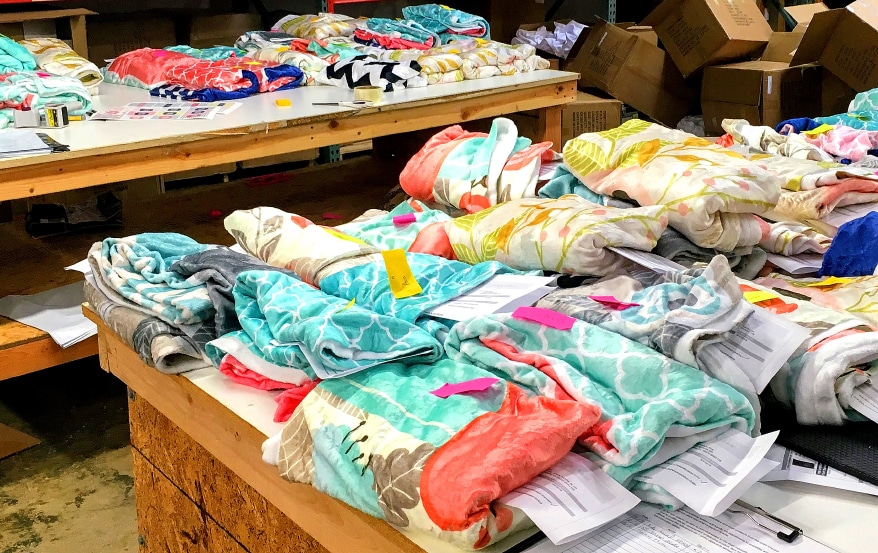
With sublimation, the initial impression of opening the package can play a huge role in the perceived value of the product. Don’t forget that there are hard costs to packaging.
Blank Good to Decorate
These costs can vary and will depend largely on the quality and quantity. Sublimation output typically is looked at as a high-quality product due to the full-color nature and the ability to personalize. I always suggest going for quality over low cost. You will have less spoilage, which you will cover, and if you can buy in bulk, you will have a nice profit margin.
Buy enough quantity to gain price breaks, but not so much that you would not be able to sell that inventory over the next 6-12 months. Costs to carry inventory for extended periods of time exist, but there also are costs to not buy in bulk. Do not forget to add the inbound freight into this figure as that can drastically change the cost of the blank. For example, a case of mugs can increase in cost by nearly 40% or more once you add the cost to ship it to you from the distributor.
Pressing Labor
Typically, this will be the largest expense area of your decorating process. And even if you are a solopreneur, you need to factor in your time into your cost basis. What do you pay your employees per hour or what rate would you pay an employee you trust to do production? Do not leave this off your cost calculator as part of what the customer is paying for. It is your time and if you leave this out, you never will be able to hire help. Eventually you can really improve your bottom line by becoming more efficient in your production.
Packaging
Even if you are going to hand deliver your finished product to the customer, a legitimate business is going to put the finished goods in some sort of package. In this case, remember with breakable items the cost can be much higher. This number is going to be very dependent on your business and how you operate. With sublimation, that initial impression of opening the package can play a huge role in the perceived value of the product. Don’t forget that there are hard costs to packaging. Even if you just are retaping a box, you still have to buy the tape.
Additional Labor
The prior labor cost (pressing labor) was just the time needed to make the actual product. Somewhere in your costs you must factor the time to take the order, prepare and print the job, as well as the time to package and handle the job before delivery. Even the delivery of the work if you or your company is doing that needs to be factored in.
Scrap and Spoilage
This section must be included somehow or you are at risk of possibly losing money on every job down the road. With sublimation, the permanency of the ink is its draw, but for the producer it also is a challenge. If an error occurs in production, there is no fixing it. You must make a new item. Even the most efficient production facilities should consider a 5% defect rate. This cost also should factor in inventory that you cannot sell and the cost of trial-and-error that comes along with perfecting the production process of a new product.
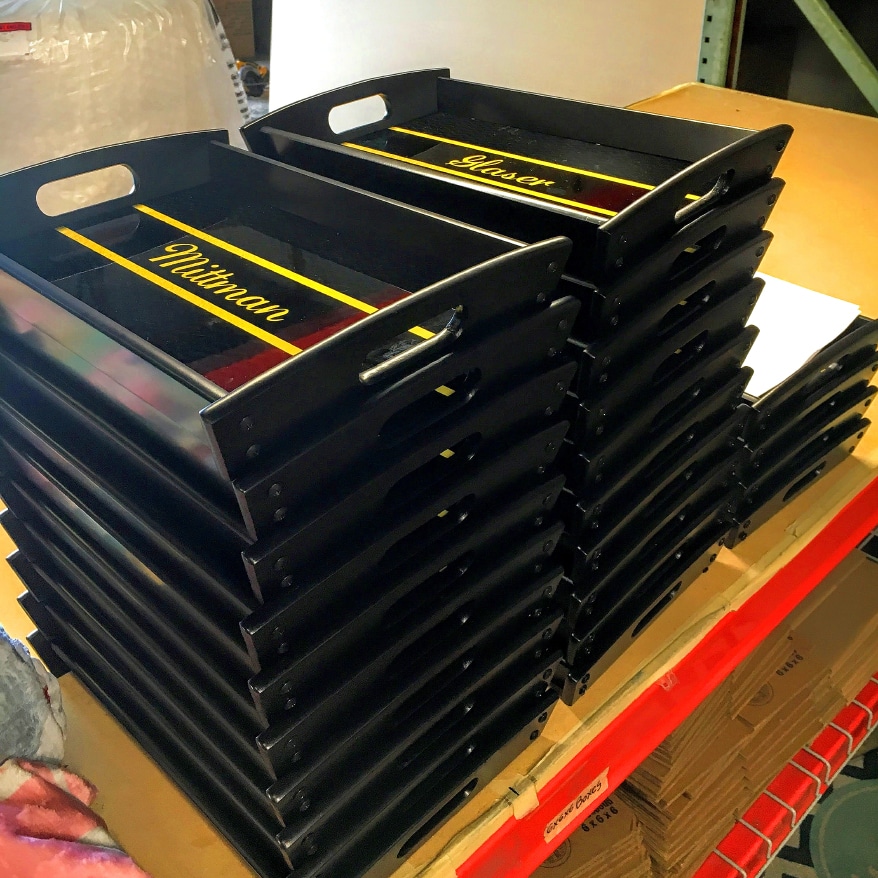
These personalized sublimation trays are a great example of custom sublimation work you can provide your customers on substrates other than apparel.
Outbound Shipping
In today’s Amazon world, people expect things to show up on their doorstep immediately. I always suggest factoring in the cost to ship items even if you are delivering or offering vcustomer pick-up. Customers like the idea of free freight so you can compete with online retailers. Factoring outbound shipping into your costs gives you the ability to never have to eat the cost of shipping when the customer cannot pick up the finished goods.
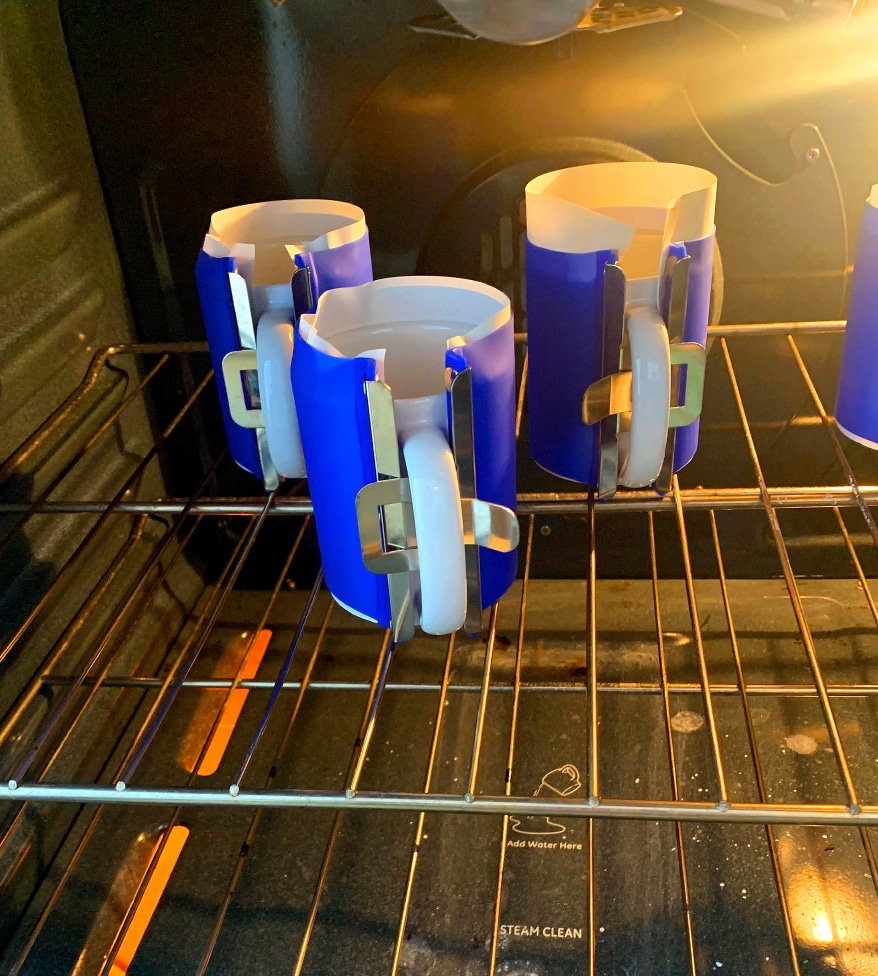
Even with products like sublimated mugs, do not forget to add the inbound freight into your costs as that can drastically change the cost of the blank. For example, a case of mugs can increase by nearly 40% or more once you add the cost to ship it to you from the distributor.
Other Costs
“Understanding and managing your true costs in sublimation is more than just number crunching. It’s about strategic planning and creating value that resonates with your customers.”
Those main costs above will have you covered in a lot of areas, but businesses do have other expenses. I encourage people to calculate their overhead rate and use that to cover these other costs in their pricing. The overhead rate gives you the comfort of not having everything above calculated down to a complete science.
The amount you spend on packing material and tape a year can be put into an overhead rate and then not have to be tracked per job. Plus, there are things that can’t be associated with individual jobs like inventory carrying costs, payroll taxes, and other potential costs that occur with every business.
With that formula created, you now will have a more accurate representation of your cost basis. The more you can document all these items over time the better and more accurate your numbers are going to be. By at least factoring in the many above items, you give yourself a framework to make sure you are making money.
Sublimation is a perceived-value industry, so your goal should be to show your customers your value and earn a nice profit margin. Without knowing the actual cost, you will never know how much you must change the perceived value to create your desired profit margin. It takes a little different way of thinking, a little market research, and being creative in your marketing strategy.
Understanding and managing your true costs in sublimation is more than just number crunching. It’s about strategic planning and creating value that resonates with your customers. By adopting and creating a formula for your company to get your cost basis, you can set competitive prices, ensure profitability, and grow your business sustainably.
AdvertisementAaron Montgomery, president and CEO of MontCo Consulting, has worked in the garment decorating world for almost 20 years. He is actively involved in the industry as a speaker and writer on such topics as marketing, social media, the personalization market, sublimation, and garment decorating techniques. As a consultant, he assists small businesses through planning and setting up their company with a customer-first mindset to give them the best chance to succeed. He co-hosts an industry podcast 2 Regular Guys Podcast and has his own podcast channel on his website as a replay of his weekly Small Business Saturdays Series. New episodes are released weekly.

SPONSORED VIDEO
Let’s Talk About It
Creating a More Diverse and Inclusive Screen Printing Industry
LET’S TALK About It: Part 3 discusses how four screen printers have employed people with disabilities, why you should consider doing the same, the resources that are available, and more. Watch the live webinar, held August 16, moderated by Adrienne Palmer, editor-in-chief, Screen Printing magazine, with panelists Ali Banholzer, Amber Massey, Ryan Moor, and Jed Seifert. The multi-part series is hosted exclusively by ROQ.US and U.N.I.T.E Together. Let’s Talk About It: Part 1 focused on Black, female screen printers and can be watched here; Part 2 focused on the LGBTQ+ community and can be watched here.
You may like
Advertisement

Atlantis Headwear Goes Solar for Sustainable Future

Comfort Colors Announces New Proprietary Dyeing Process Called “Pigment Pure”

10 Production Scheduling Secrets That Will Have Your Team Ready to Rock
Advertisement
Subscribe

Bulletins
Get the most important news and business ideas from Screen Printing magazine's news bulletin.
Advertisement
Most Popular
-

 Columns1 month ago
Columns1 month ago8 Marketing Mistakes Not to Make When Promoting Your Screen Printing Services Online
-

 Editor's Note4 weeks ago
Editor's Note4 weeks agoLivin’ the High Life
-

 Press Releases1 month ago
Press Releases1 month agoSports Inspired Clothing Market: The Influence of Sports on Fashion Forward Looks
-

 Marshall Atkinson4 weeks ago
Marshall Atkinson4 weeks agoHow to Create a Winning Culture in Your Screen-Printing Business
-

 Case Studies1 month ago
Case Studies1 month agoScreen Printing for Texture and Depth
-

 Press Releases3 weeks ago
Press Releases3 weeks agoHope Harbor to Receive Donation from BlueCotton’s 2024 Mary Ruth King Award Recipient
-

 News & Trends2 months ago
News & Trends2 months agoWhat Are ZALPHAS and How Can You Serve Them in Your Print Business?
-
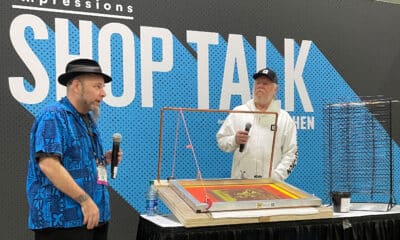
 Headlines1 month ago
Headlines1 month agoLive Poster Printing Raises $30K for Charity










